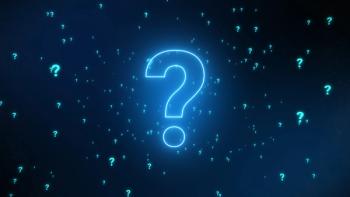
Autism Genes Believed on Chromosome 11
HAMILTON, Ontario -- Genes associated with an autism risk appear to be clustered in a region on chromosome 11, according to the largest study yet of families with a predisposition to the condition.
HAMILTON, Ontario, Feb. 19 -- Genes associated with an autism risk appear to be clustered in a region on chromosome 11, according to the largest study yet of families with a predisposition to the condition.
In a study of more than 1,100 families, the Autism Genome Project Consortium, consisting of 137 investigators from 50 centers in 19 countries, has closed in on a stretch of the chromosome where genes involved with the neurotransmitter glutamate are known to lie, reported Peter Szatman, Ph.D., of McMaster University, Bernie Devlin, Ph.D., of the University of Pittsburgh, and colleagues, online in Nature Genetics.
"This study is by far the largest study ever conducted, in terms of both researchers and research subjects," said Joachim Hallmayer, M.D., of Stanford, a co-author. The results point the way toward further studies, but are far from definitive, the authors acknowledged.
"While promising, these results need to be followed up with more refined genetic maps to home in on other specific candidate genes. We also need to look more closely at chromosomal anomalies in large samples of children with autism," Dr. Hallmayer said.
The investigators conducted genetic analyses on 1,168 families in which two or more members had a diagnosis of autism, as defined by either the Autism Diagnostic Interview-Revised and the Autism Diagnostic Observation Schedule, or by clinical evaluation.
Genetic analysis of such a large sample may be particularly revealing the authors wrote, because autism has a strong genetic component. They pointed out that in twin studies, there is a concordance for autism of 60% to 92% among identical (monozygotic) twins, and up to 10% for dizygotic pairs.
"Although familial clustering in autism could reflect shared environmental factors, twin studies and the distribution of milder phenotypes in families favors a model involving multiple interacting loci," the investigators wrote.
They hypothesized that autism is a joint or combined genetic affair in which various combinations of susceptibility alleles may play a role.
They used automated genotype analysis techniques to conduct genetic linkage analysis, which looked for specific genetic markers in the vicinity of a suspected autism susceptibility gene.
They also tracked chromosomal abnormalities among affected family members by looking at copy number variations, sub-microscopic genomic insertions, and deletions implicated in various disorders, including autism.
"Although we know autism is highly heritable, complex gene interactions and submicroscopic anomalies create a din of statistical noise that drowns out detection of signals from linked sites in the genome," said Dr. Devlin. "To amplify these signals, we brought to bear gene chip technology with a huge sample, and also screened for these fine-level anomalies, factoring them into the analysis."
There is also evidence that chromosomal abnormalities or genetic disorders such as fragile X syndrome or tuberous sclerosis syndrome, both of which involve aberrant glutamate signaling, may be involved in autism risk, they wrote.
Using the genetic linkage analysis, the authors found that the 11p12-p13 region of chromosome 11 was most closely linked to neuroligins, transmembrane proteins expressed on the postsynaptic cell that bind to presynaptic transmembrane proteins called ?-neurexins.
The candidate genes are involved in the trans-synaptic transportation of glutamate, a major excitatory neurotransmitter.
"We also found a family with a deletion in a gene called neurexin 1 that appeared to correlate with a diagnosis of autism in this family," Dr. Hallmayer said.
Two young girls in the family with the neurexin 1 deletion presented with typical autism, including characteristic developmental delays; one child appeared to be nonverbal, and that other had mild language regression.
Neurexin 1 encodes for a protein that facilitates interneuronal communication. Deficits or defects in glutamate function have been implicated previously in autism and other neurodevelopmental disorders.
"As for the chromosome 11 location, we think there is another susceptibility gene there and we are actively pursuing it," said co-author Gerad Schellenberg, Ph.D., of the University of Washington in Seattle. "We are in the neighborhood and have a plan to find it."
Newsletter
Enhance your clinical practice with the Patient Care newsletter, offering the latest evidence-based guidelines, diagnostic insights, and treatment strategies for primary care physicians.

































































































































































































































































































